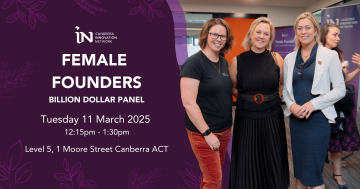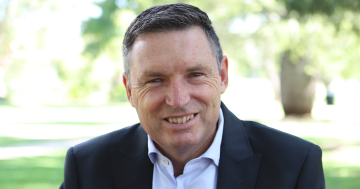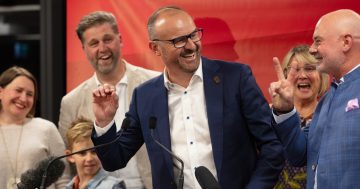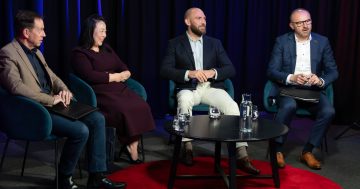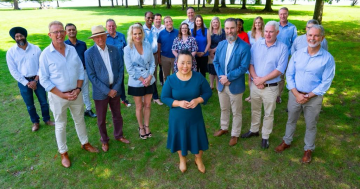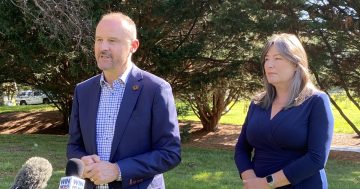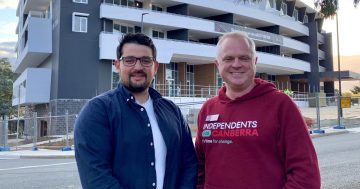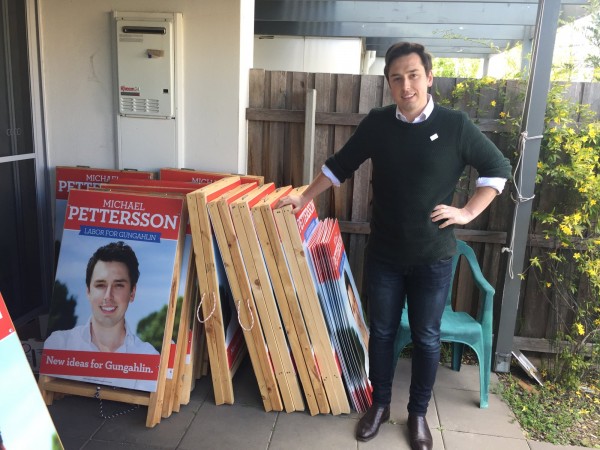
There will be plenty of analysis in coming days about why Canberrans voted the way they did. This is our early assessment of some of the key issues that were in play.
Depth per seat and local focus of candidates
In Ginninderra, Labor had two sitting MLAs in possible future deputy leader Yvette Berry and fellow cabinet member Chris Bourke. It had one high profile and popular candidate with deep roots in the electorate in Kippax Uniting Church minister Gordon Ramsay (pictured immediately below with his wife), another in local issues blogger, Belconnen Community Council chair Belconnen Arts Centre board member Tara Cheyne (next photo below Mr Ramsay) and another in former Labor staffer and RiotACT columnist Kim Fischer.
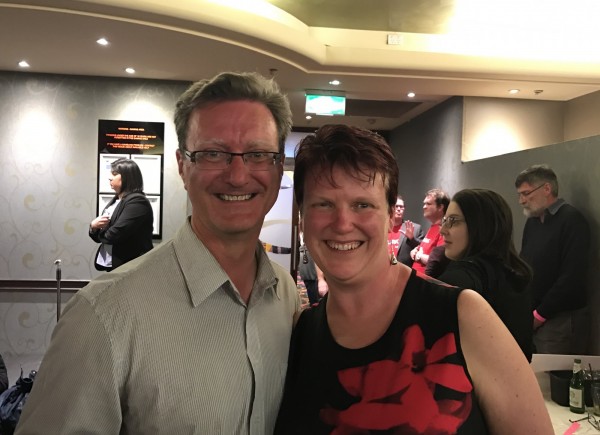
Having such strong candidates makes it hard to pick even now who will actually win one of the five slots in the electorate, but one thing is for sure, under Hare-Clarke, such a line-up is a winner overall.

Meanwhile, in Yerrabi, a 25-year-old wunderkind from Crace named Michael Pettersson (and a loyal band of supporters) built up such name recognition and community support that he is on track to become the surprise success story of the election. He’s pictured at top.
The fact that one of his key Liberals opponents lives in Red Hill and another held his campaign launch in a Manuka cafe is just as much in play in this seat as the fact that light rail is of course popular here.
Social media management
The Liberals totally blew it on this one. Social media works best when it’s authentic because accounts are run by candidates. Take a look at Andrew Barr’s Facebook and Twitter accounts and you’ll see immediately that he is hands on and reactive.
The Liberals’ social media was, we understand, handled centrally.
Dozens of Canberrans were so angry at being blocked or having their comments on Liberals Facebook pages deleted they even set up a Facebook group to share their frustrations:
“Canberra Liberals: stop suppressing comments & start responding to questions on Facebook!”
Yes, the co-founders were Greens supporters, but the fact remains, blocking and deleting posts makes people angry and gives them more rather than less ammunition.
Unless comments breach guidelines such as those on discrimination and vilification in the RiotACT’s moderation policies, it is better to either engage and make your case, leave the commenter’s remark so that others can assess it on its merits, or post a note saying something like “We’ll have to agree to disagree on this one, but thanks for your input.”
Vision for the future
From light rail to Test cricket, to international engagement and 100 per cent renewable energy targets, Labor has developed and successfully sold a vision for the future of the city.
The Liberals focused on issues that affect Canberrans individually such as rates and the cost of light rail, but this is a city filled with progressives who actually want to pay taxes to ensure a better life for everyone. For the most part, they’re actually happy to wear the rate rises as part of a tax reform package, and to pay for light rail even if they won’t use it as much as their friends across town.
The two key visions within the Liberals’ campaign were to improve the health system and bus network, but Labor swiftly countered with commitments that either matched or improved on those of their conservative opponents.
People power
There was simply no comparison between the major parties when it came to people on the ground. With the exception of Elizabeth Lee, the Liberals lacked the hordes of willing helpers that Labor builds its success upon. If the attendance at their launch event was an indication of their active membership, it was a much smaller and older group than that of Labor. Take a look at our Facebook live video coverage of the election night parties and you’ll see what I mean.
You’ll also note the evangelical behaviour of said supporters in contrast with the more reserved Liberals. It’s infectious, that level of political belief, and each and every one of those supporters is lobbying their friends and contacts via social media and in person constantly.
A huge benefit for all of this for Labor is that when it comes time to select candidates, they have a pool of potentials who are embedded in their communities from which to draw.
Media management
Every single day of the campaign, Labor had something positive to announce for the city, in another part of the city, to the point where it became impossible for the media to keep up. It meant Mr Barr, Ms Fitzharris or Ms Berry in particular were on commercial and ABC television with something to sell every night.
I have never in all my 35 years living in the capital travelled so widely within it as I have during the campaign. Did Labor hold an event or announcements in every suburb? It sure felt like it at times, and this was a strategy that gave it a territory-wide presence.
They kept the media so busy covering election pledges that journalists had little time left for analysis of, for example, the Auditor-General’s report into the Land Development Agency or indeed whether the latest announcement was something new or just a re-announcement of something already factored into the forward estimates.
They had a very structured campaign plan from start to finish, with specific policy focus rotating weekly.
All of this was made possible for them because with 15 years in government, they have access to resources, information and venues the Opposition can only dream of.
Pictured are Michael Pettersson at home in Crace, Gordon Ramsay and his wife, and Tara Cheyne. Photos: Charlotte Harper











